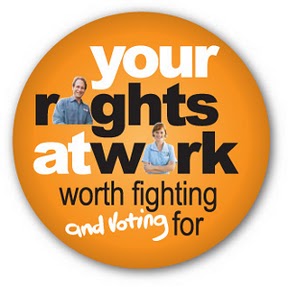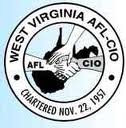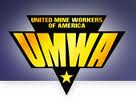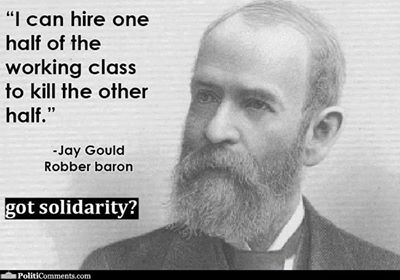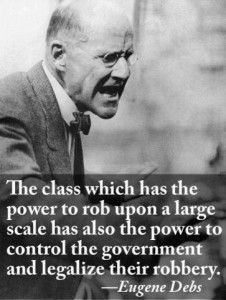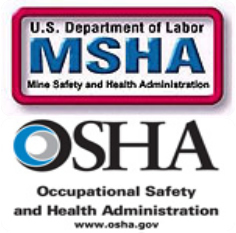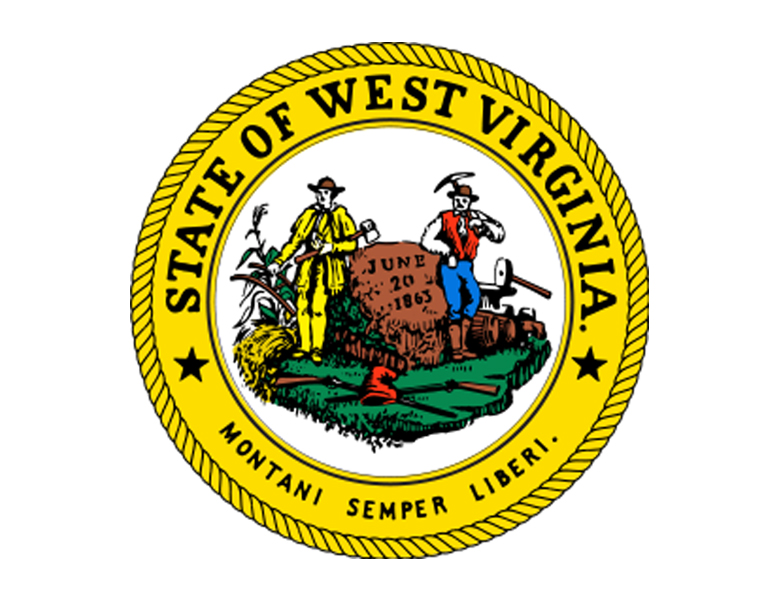Young Workers Are The Future For Unions
Trying to get the point of how important having a union in their workplace is a hard sell for many young workers. Unfortunately it’s easier if they moved from the wage theft, hours stealing, authoritarian, and harsh private sector to a union shop. They seem to appreciate what a union can do for them when they were previously denied a voice in their former workplaces. If a young worker has not had that experience, chances are that getting them to engage and appreciate their union can be an uphill battle.
Too many older trade unionists just write it off as a symptom of the generation, forgetting a time when they were young, ten feet tall, and bullet proof. They forget how fine it was to have all the energy and drive of youth, unencumbered by thoughts of rights, poliitics, and all the things older trade unionists were forced to learn over the years.
Most unions recognize this. In the UWUA, we have the Young Worker Initiative, and the Member To Member programs to help build that bridge between generations of union workers. Other unions are doing other things to address this problem, and the National AFL-CIO even has a tab on it’s website that specifically addresses young workers.
Josh Israel has a great article on Think Progress entitled: “Five Ways Unions Are Trying To Get Their Mojo Back.” Josh gives real world examples of what unions are doing to raise awareness of what unions are about, the importance of unions at the local level in the communities they serve, and to fight back the attempts of anti-unionists to portray unions as lazy, out-dated, and non-relevant.
In a cultural atmosphere of greed and looking out for #1, unions have an important part to play in reminding all workers that it’s easy for employers to pick off workers one-by-one, when workers aren’t organized or represented. Even in established unions, all the power a Local Union has in addressing workplace issues flows from the membership standing together.
Solidarity is a word that some pundits have tried to denegrate over the years, conjuring up visions of socialistic or communist overtones. All solidarity really stands for is when workers look out for each other. This can be in a specific workplace, on a local level, state level, as well as a federal level. Solidarity means we stand together regardless of race, creed, or religion so that all of us have a fair and equal opportunity to earn a decent living for ourselves and our families. It means we don’t attack each other, when we disagree we do so in a civil manner of mutual respect, and we recognize the forces against us are big, well organized, heavily financed (usually secretly), and motivated by greed to strip our rights, wages, benefits, and pensions in the service of their own wealth and their shareholders whom they serve. In this paradigm, unions act as an essential balancing factor that works to swing the scales of social justice in favor of those who actually do the work.
An advantage workers have today is a greater access to multiple viewpoints, news, and information thanks to the internet and domains like Facebook, Twitter, and other websites.
The battle for workers rights is alive and well in cyber-space.
Bottom line is: if you are a young worker who finds themselves in a union and have a job that pays well that offers you a path into the middle class and a good living that can’t be easily replaced by quitting and going to work somewhere else, you owe it to yourself to do everything you can to protect that job by getting involved in YOUR union.
If you’re not organized and represented, the only question is why?
States With Stronger Unions Have Stronger Middle Class
“This material [article] was published by the Center for American Progress Action” (Click to go to their site)
By David Madland and Nick Bunker |
New Census Bureau data on state incomes released yesterday show just how important unions are to creating a strong middle class. An update to an analysis in our April 2011 report, “How Unions Make the Middle Class,” finds that a 10-percentage-point increase in the unionization rate would boost the average annual income for middle-class households—unionized or not—by $1,501 a year. Ensuring the United States has a strong middle class is critical, as the middle class is the engine of economic growth.
Unions strengthen the middle class by advocating for workers both in the workplace and in our democracy. Organized labor not only fights for higher wages and better benefits at work but it also makes democracy work for the middle class and advocates for policies that boost the middle class as a whole. As the new Census data make clear, stronger unions create a strong middle class not only at the national level but at the state level, as well.
In 2011, for example, the five states with the lowest unionization rates—North Carolina, South Carolina, Georgia, Arkansas, and Louisiana—all had middle classes with below-average strength, with strength defined as the share of income going to the middle 60 percent of households. Four out of the five states with the highest unionization rates—Alaska, Hawaii, Washington, and Michigan—all had middle classes with above-average strength.
The chart below shows the state-by-state impact of increasing unionization rates by 10 percentage points, returning them roughly to their 1980s levels. All middle-class households would feel the effects of this benefit, whether they have union members or not. These figures are based on a regression analysis that looks at how unionization rates affect the share of income going to the middle class, while taking into account other important factors such as education levels, unemployment, the income level of a state, and industry employment mix.
The boost from increased unionization is roughly equivalent to the $1,664-per-household boost from increasing college attainment rates by 10 percentage points. Improving educational outcomes and increasing access to higher education are correctly pointed out as important steps for bolstering the middle class, but, as our numbers show, we should not underestimate the importance of unions.
The American middle class has weakened over the past several decades and now receives the lowest share of income it ever has—45.7 percent—since the data were first collected in 1967. We can begin to rebuild our middle class, however, starting with these 35 policies. As our analysis shows, strengthening organized labor is one of the most important first steps.
David Madland is the Director of the American Worker Project at the Center for American Progress Action Fund. Nick Bunker is a Research Assistant with the Action Fund.
Workplace Wellness and You
“The Safeway Amendment” in the Affordable care act came about when, in 2009, Safeway CEO Steven Burd wrote an article in the Wall Street Journal about a program his company was implimenting to address employee health concerns in an attempt to head off skyrocketing healthcare costs.
Since then, employers have jumped aboard the employee wellness band wagon to the tune of spending over $2 billion dollar a year on employee health and wellness programs. These programs have sought to incetivize employees into more healthy living habits, cajole them, and sometimes downright threaten them for non-participation.
Wellness programs themselves have come under fire for employers violation of employees medical privacy, and how they use healthcare data they collected in decisions affecting employees. Program detractors claim such efforts unfair because they award those employees blessed with good health and punishing those who may have, through genetic predisposition, chronic health issues, or their own lifestyle choices; may suffer ill health. This has led to accusations of “cost shifting” healthcare costs onto those employees identified as not healthy.
It has been revealed that many corporations involved in employee wellness programs actually lose money due to the punitive aspects of their programs and by their programs not being employee supported. It has been suggested that this loss on return of investment (ROI) may be as much as a quarter for every dollar spent.
So what makes a healthy workplace were employees value, understand, and appreciate how their personal health affects their employer?
One thing that stands out in case studies of effective versus ineffective health and wellness programs is the corporate culture of individual employers. Employers who have worked hard to create an atmosphere of true mutual respect and appreciation of their employees in a cooperative and functiong workplace not only enjoy greater overall productivity, but also have more success and employee engagement in implimenting and administering their health and wellness initiatives.
By the same token, employers who want to be seen as following the latest trends in establishing heath and wellness programs but may have a contentious, combative, or antagonistic relationship with their workforces have little success in implimenting successful programs.
The bottom line is that you cannot cure a sick worplace culture by the addition of an employer sponsored and managed heath and wellness program.
If you work for an employer or in a corporate culture where the employer is often accused of being dishonest, hostile, or simply uncaring of their employees then the prospect of a successful wellness program is very unlikely.
For more information, click the above highlighted links to help understand this complicated issue.
Labor Rights ARE Civil Rights!
In an attempt to peddle more fear among their empty headed, brainwashed, and bigoted followers; the extreme right wing was quick to bring to light that white Americans long time majority in our society MAY be shrinking.
If our was a FAIR and JUST society, why would this speculation be so disturbing?
It’s sad when those of the 1% are so deseperate, and they think the rest of us so stupid, that we should turn against each other so that they can continue buying our government one piece at a time (like Johnny Cash’s Cadillac), corrupt our legal system in their favor, and push for less regulation of them and more regulations for the rest of us.
On June 27th, there was a huge rally in Canton, Mississippi, in support of ALL working Americans. Over 400 attended the gathering held in the shadow of the Nissan plant that has been attempting to organize their fIrst union, despite heavy handed management interference, intimidation, and coercement. You can visit Look Beneath The Shine and read the story of the struggle faced by these workers.
The problems at Nissan are the same ones faced by workers nationwide. Arbitrary discipline, rampant favoritism, cuts in healthcare benefits, increasing use of temporary employees, and changes to working hours and conditions with no warning or excuse round out Nissan’s massive anti-union offensive management has employed against their workforce.
Lethal Weapon star Danny Glover has taken a personal interest in the fight, appearing many times in support of Nissan workers. Appearing with the Hollywood star are labor leaders, church leaders, students, retirees, and people from every walk of life who realize that the fight for fairness in the workplace translates to fairness in our country as a society.
All the union activity in the southern states has spawned a new website called Facing South. Issues such as voter suppression, political corruption and cronyism, wage inequality, as well as other societal woes and injustices are fodder for their site.
Whether it’s Mercedes in Alabama, VW in Tennessee, or Nissan in Mississippi; workers are finding their voice and standing up for a better life for themselves and their family.
To quote a line from John Sayles movie Matewan, “there’s only two sides; them that work and them who don’t. You work, they don’t.”
Divide and conquer has been a favored tool in the union busters arsenal. They will use ANY difference between groups of workers to build a rift between people that keeps them from pulling together. The use of temporary workers has exploded nationwide, and these workers are too often exploited with no benefits and low wages and then blamed as THE problem in the workforces they are forced to work in.
One shameful example is Janio Salinas, a temporary worker at a sugar refinery who was killed thirteen days after management made the decision to remove a piece of safety equipment from a sugar hopper. The hopper engulfed Salinas, killing him.
As long as there are those who want to prostate themselves at the feet of the 1%, blame the poor for the condition of the country, fan the flames of hate, fear, and bigotry; they serve to remind all of us that LABOR RIGHTS ARE CIVIL RIGHTS!
The Changing Face of Unions
In 2013, Gallup, a leading polling agency, showed that 54% of Americans approve labor unions. Nearly 1 in 3 of public sector workers are covered by collective bargaining, while in the private sector, only 1 in 15 workers are likely to be in a union.
What this means is that todays union worker is more likely to be white collar, better educated, and work in the fields of educator or clerical worker, as opposed to a mechanic or electrician in a trade craft. Surprisingly, there are more women than men making up America’s organized union ranks.
This shift happened when many of America’s blue collar manufacturing jobs were shipped oversea or across ourborders. Since 2000, there have been an estimated job loss in manufacturing of 5 million jobs, many of them union jobs.
Todays labor movement is heavily swayed by the unions who have the largest membership. America’s largest union is the National Education Association (NEA), who has a membership of 3.2 million members. The Service Employees International Union boasts a membership of 2.1 million members, followed by the American Federation of State County and Municipal Employees (AFSCME) has 1.6 million members and the American Federation of Teachers (AFT) represents its 1.5 million. The United Food and Commercial Workers International Union rounds out the top 5 unions, with 1.3 million members.
This is why, in 2011, when Wisconsin Governor Scott Walker attacked public sector workers, it was a big deal for labor. Anti-union forces are targeting public sector workers. The recent Supreme Court Decision just handed down in Harris vs. Quinn deals another blow to public sector unions in stripping the funds from labor that represents their constituents.
Labor has responded in a way that they always have, by organizing. The recent and current political climate has been a shock to organizers, with the actions on Tennessee lawmakers during the UAW campaign to organize VW in Chattanooga, and Nissan in Mississippi. What labor learned is that the forces arrayed against them inhabit almost every institution they would normally turn to when corporate forces employed dirty and illegal tactics in thwarting them. In the middle of this are the workers, often left dazed, confused, and worried that if unionization is not available to them then where can they turn for more job security, better wages, and the kind of benefits that matter to them and their families.
A report ran by the National Labor Relations Board between 12/01/2013- 12/31/2013 proves conclusively that people want the security and voice that comes with being union. In all the cases cited, 63% were WON by the union petitioning for an election. Each case represents brave workers who stepped up and took a stand. Six out of every 10 got the protection and voice they were seeking, but the four out of 10 were left exposed to their employers post election wrath.
Union accomplished this result even in the poisoned and polarized atmsophere that has permeated the social fabric of America. This may also be why publoc sector unions are growing. Public sector employers, who are paid and answer to federal and state regulators, are less likely to employ tactics during organizing that would make them liable to charges from the National Labor Relations Board in violating the National Labor Relations Act.
Private corporations feel no such constraint. Depending on the corporate theology, corporations that are anti-union will intimidate, threaten, bribe, and even fire workers for excercising their rights to the protected activity of organizing and deciding whether or not to form and join a union. Many times, these actions are adjudicated through the courts, but years after the fact and too late to help workers who may have been made an example of by those companies.
The biggest mistake most people make is thinking UNIONS and not equating PEOPLE: PEOPLE ARE THE UNION. That person holding a sign on a picket line is out there because there’s something they believe in and will fight for. The UNION protects them while they engage in that activity, but it’s THAT person who made their sign and showed up.
The precedent set is simple: if you’re going to organize, you BETTER WIN!
The other precedent is that if you’re lucky enough to be represented by a union, you can’t afford not to be active in your union.
Union members are out, in force, fighting for the the rights of all American workers to earn decent wages, have some job security, be able to have benefits that protect their families, and have a voice in the workplace and legislators who make the laws that govern them.
Please visit the “ORGANIZING” tab on our site, and visit the UWUA main site. The UWUA is a great union in that it recognizes and reacts with action to the challenges facing all workers and their members.
You can also find what issues are trending by visiting the National AFL-CIO website, or West Virginia’s AFL-CIO.
Energy Economist Testifies In PA. About Coal Jobs
The UMWA has testified in PA. about recent EPA Clean Power rules, through energy economist and attorney Eugene M. Trisko of Berkeley Springs, WV.
Mr. Trisko’s report tracks in on points all of us who depend on coal for a living have discussed among ourselves, but to read his thorough analysis and see the staggering data in black and white is overwhelming.
Mr. Trisko estimates cumalative jobs direct losses between 2015- 2035 of 2.3 million, while the economic costs, both direct and indirect he estimates to be $376 BILLION dollars.
Pennsylvania is the 4th leading coal producing state, so one can only speculate what the impact would be on West Virginia. Pennsylvania has more diversity in their economy than West Virginia, as well as major urban centers on each east and west border.
The new rules also do not give credit for those old and inefficient coal plants shut down since 2009. The new rules force reliance on natural gas, whose price volatility is well known while delivery problems are still being learned; and nuclear power, which has faced many decommissionings of plants which are all of the 1960’s and 70’s vintage. Renewable energy is the catchphrase currently buzzing in the publics ear, but this energy is non-dispatchable energy that has to be used immediately when it’s available and replaced with other generation when it is not.
If coal was a person, it would probably feel hurt and betrayed, after building and sustaining this country all these years, through an industrial revolution two World Wars, and the emergence of the United States as one of the worlds most powerful superpowers. Coal is as American as apple pie, baseball, and hot dogs; but it’s being treated by our culture as the black sheep of the family.
Modern coal power plants, with scrubbers for SO2 emmissions and Selective Catalytic Reduction (SCRs) for nitous-oxide are burning coal more cleanly than ever. Power plant water usage is more closely monitored than ever and usage is down. One advantage coal has over nuclear power is that if a coal plant explodes it doesn’t leave millions of acres uninhabitable for hundreds of years.
One problem utilities face is a loss of credibility with the public they serve, after Enron, deregulation, coal ash spills, and other shenanigans that regulated utilities used to hold themselves above and apart from other common corporate businesses. Ma’ Bell turned into Ma’ Barker, but the one thing the people who work in utilities know and understand is how to make electricity and get it to the customer in the safest and cheapest way possible.
One of the most powerful campaigns that came out of the healthcare overhaul was grandma’ sitting at her kitchen table trying to decide if she was going to pay for her perscriptions or buy food for that month. If the EPA rules continue unabated, she will have to make this decision in the dark because she will not be able to pay her electric bill.
Read Mr. Trisko’s full analysis by clicking here
Unions Lobby For Educators To Teach Labor History
In Connecticut, Unions and their allies are trying to flex their muscle in state legislatures, pushing for labor history to be included in social studies curriculum and hoping a new generation of high school students will one day be well-educated in labor issues.
However, the results are instead shaping up as a reminder of the tough political landscape faced by organized labor. In six states, opponents have pushed back against demands that teachers offer lessons about the first craft unions in the 19th century, the large-scale organizing drives that powered the growth of industrial unions in the 1930s, the rise of organized labor as a political machine and other highlights of America’s union movement.
California and Delaware are the only states with laws that encourage schools to teach labor history.
Ed Leavy, secretary-treasurer of teachers union AFT Connecticut, said: “It’s not that labor unions are demanding this so we can increase the ranks. It’s people preventing this so we don’t.”
Steve Kass, a member of the executive board of the Greater New Haven Labor History Association and a backer of the legislation, said Connecticut’s legislation could have bolstered the union cause. “We’re losing a generation of workers who don’t have an understanding about the union movement,” he said.
The measure failed this year for a third consecutive time even after supporters agreed to a compromise to include lessons in the history of capitalism. Opponents had many arguments against the measure.
The state’s largest business group, the Connecticut Business and Industry Association, said the legislation would have diverted resources from teaching core curriculum and closing the state’s achievement gap.
Various versions of labor history legislation have failed over the years in Illinois, Massachusetts, Pennsylvania and Tennessee, according to the National Conference of State Legislatures. Legislation also failed calling for labor history and collective bargaining to be taught in Vermont.
 The Connecticut Legislature has already enacted measures requiring the state Board of Education to help and encourage local schools to provide curriculum materials for lessons about the Irish famine, African-American history and Holocaust studies.
The Connecticut Legislature has already enacted measures requiring the state Board of Education to help and encourage local schools to provide curriculum materials for lessons about the Irish famine, African-American history and Holocaust studies.
Steve Armstrong, president of the National Council for the Social Studies and a West Hartford teacher, says squeezing another course into an already crowded school year could be difficult. “It would be great if we can teach six weeks on the Irish potato famine, but it ain’t going to happen,” he said.
To Leavy, labor history could introduce students to early labor leaders such as Eugene V. Debs in addition to industrialists who are familiar to most Americans. “You hear Rockefeller, you hear Vanderbilt,” he said. “You don’t hear Debs. The world is bigger than this.”
Manpower Survey Reveals Startling Facts About Future Energy Staffing
Manpower released a report on May 5th that details that one of the greatest challenges facing the energy sector over the next decade will be in finding qualified talent to operate and maintain the nations electrical power supply and generation.
This report comes out when some utilities are their fighting workers on almost every frony when it comes to wages, benefits and retirement.
The report focuses on current trends in the industry and offers some startling statitics:
Average age of current utility workers: 46
Percentage of workers over 50 years of age: 50%
Percentage of wokers who can retire in 2 years: 36%
Percentage of utility workers retiring in the nest 10 years: 60%
Number that COULD retire RIGHT NOW: 18,000
Even more amazing is the statistics from the point of view of energy executives. 86% say that utility workers need a more complex skill set than just 5 years ago. 90% say that frontline workers require higher levels of technical competency that just 5 years ago. Almost three quarters agree that the ability to attract quality candidates to the energy industry will have an impact on North America’s ability to compete for decades to come.
Click here to view the report.
Safety Suffers When Unions Suffer
Part of being union is having a voice in the workplace. Having a voice in the workplace means that you have protection and mechanisms in place if your employer takes any action to muzzle your legitimate complaints.
An employer in Jacksonville, Florida, is feeling the wrath of OSHA after a senseless workplace tragedy that took the life of a 32 year old worker. The death is senseless because OSHA required safegaurds were not in place and the employee lost his life because of this.
According to an OSHA press release (click to view):
“In August 2013, a 32-year-old machine helper entered a large wire mesh manufacturing machine to retrieve a fallen metal bar, and he was struck and killed by a part that feeds the wire into the machine’s welding area. The light curtain that would have automatically turned the machine off before he entered the danger zone had been disabled. Proper operation of the machine’s guards, a basic Occupational Safety and Health Administration requirement, would have saved his life.”
For that, a young employee is dead and the employer faces proposed fines totalled $697,700.00 dollars and additional violations has landed the employer on the Severe Violator Enforcement Program.
“This was a preventable and senseless tragedy,” said U.S. Secretary of Labor Thomas E. Perez. “When employers are serious about safety, everyone benefits. Wire Mesh Sales LLC failed to properly implement OSHA safety regulations, and a worker paid the ultimate price.”
OSHA proposes fines for the eight per-instance willful violations. A willful violation is one committed with intentional knowing or voluntary disregard for the law’s requirements, or with plain indifference to worker safety and health.
It is conditions such as these that should not be allowed in America. You have heard it said that America’s biggest export is our manufacturing jobs, while our biggest import is third world working conditions. The fact that 56 of these workers were not even native English speaking is a pretty strong indicator that these workers were not unionized.
The reason the U.S. leaders cannot agree on real immigration reform is partly because the party backed by Big Business wants these workers who will work for less than a living wage and are hard to organize because of their legal status and a serious language barrier. Another group of politicians want the illegals because the family they have in this country who are legal will always vote for them.
Both American political parties are equally guilty for lack of immigration reform.
One hard lesson for all unions is that a union must work for and protect the rights of ALL workers. That lesson has been learned and union membership is again on the rise. Illegal workers can’t do it for us, it takes American workers acting like Americans to get this done so we can apply those lessons learned of inclusion of all workers regardless of age, race, sex, national origin, or sexual orientation; not taking our unions for granted and becoming lulled in to lethargy; and holding our elected officials responsible for the things they fight for and fight against.
Who Owns West Virginia?
The West Virginia Center On Budget and Policy released an interesting report on just who the largest corporate landowners in West Virginia are and how these patterns have been changing.
Purchase of West Virginia’s land by timber management companies is perhaps the most interesting finding by investigators for this report, researchers also found:
- The top 25 private owners own 17.6 percent of the state’s approximately 13 million private acres.
- In six counties, the top ten landowners own at least 50 percent of private land. Of the six, five are located in the southern coalfields – Wyoming, McDowell, Logan, Mingo and Boone. Wyoming County has the highest concentration of ownership of any county.
- Not one of the state’s top ten private landowners is headquartered in West Virginia.
- Many of the counties – including Harrison, Barbour, Mineral, Lincoln, and Putnam – that had high concentrations of absentee corporate ownership (over 50%) in Miller’s 1974 study did not in this analysis.
- Only three corporations that were among the state’s top ten landowners in 1974 remained on that list in 2011. If the sale of MeadWestvaco properties to Plum Creek Timber is completed, only two of the 1974 top owners will still be on the list.
- Nationally timberland management concerns control about half of the nation’s timberlands that had been managed by industrial timber companies until the 1980s.




